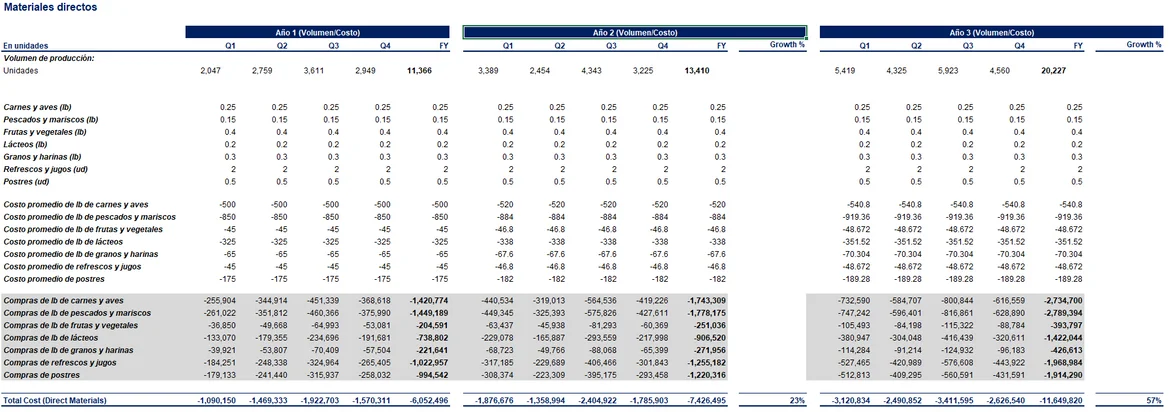Resolved: Production Volume for a Restaurant
Hi,
I'm trying to make a budget for a restaurant. Could you please guide me on how to handle the target warehouse level, beginning inventory and ending inventory? I believe it's different because the inventory isn't finished goods, but rather raw materials, as opposed to the case study of Henry's hats. The restaurant hasn't started business yet, so I'm budgetting 3 years based on best guesses and assumptions.
Thanks
4 answers ( 0 marked as helpful)
Hi Jacobo,It is indded a different case because you're dealing with raw materials such as food ingredients rather than finished goods.
Try the following please:
Target Warehouse Level: Estimate based on the average consumption of raw materials, adjusted for perishability and delivery schedules.
Beginning Inventory: For the first period, it will be zero. For subsequent periods, it equals the previous period's ending inventory.
Ending Inventory: Plan to maintain a sufficient amount for the next period’s needs, balancing perishability and storage capacity.
Each estimate will depend on your projected usage and ordering frequency.
Target Warehouse Level: Estimate based on the average consumption of raw materials, adjusted for perishability and delivery schedules.
Beginning Inventory: For the first period, it will be zero. For subsequent periods, it equals the previous period's ending inventory.
Ending Inventory: Plan to maintain a sufficient amount for the next period’s needs, balancing perishability and storage capacity.
Each estimate will depend on your projected usage and ordering frequency.
Best,
Ned
Thank you for your answer. I would like to understand a little bit more. Consider the following scenario:



Even though it's in Spanish, it is the same "Volume Production" sheet we used in the course examples. In this case, I treat the sales volume at the very top as the amount of families/groups of people I will serve in a given quarter. This means every "sale" is a full meal for 2 or more people, not just a single serving. How would you translate the meaning of my "ending inventory" and "production volume" in this case? I don't know if the following picture helps, but this is my "Direct Materials" sheet, which depends on the "Production Volume" one:

Here what I'm doing is stating how many pounds/units of each kind of ingredient is needer, on average, for a full meal (sale). Then I include the cost per unit of each and proceed to calculate the cost of the direct materials. Do you know a good way of estimating the target warehouse level? Is there a benchmark I can use for reference in the restaurant industry?
Thanks in advance
Also, would seasonality affect the decision of keeping more or less things in inventory? Q3 is high season while Q2 is low season.
Hi Jacobo,
The spreadsheet and calculations look good (as far as the financial model is concerned). Great job!
However, I'm unable to comment on the reasonableness of the outcome, as this is a specific business case. The volumes will depend on the recipes used, menu offered, perishability of products used, etc.
It's good to have a seasonality assumption, as you suggested. Yet, applying it would be also case-specific - if you say that Q3 is a high season, then think of which products will sell the most during that period and assume higher purchase volumes and inventory levels for them.
Please let me know if you have any other questions on the model itself.
Best,
Antoniya